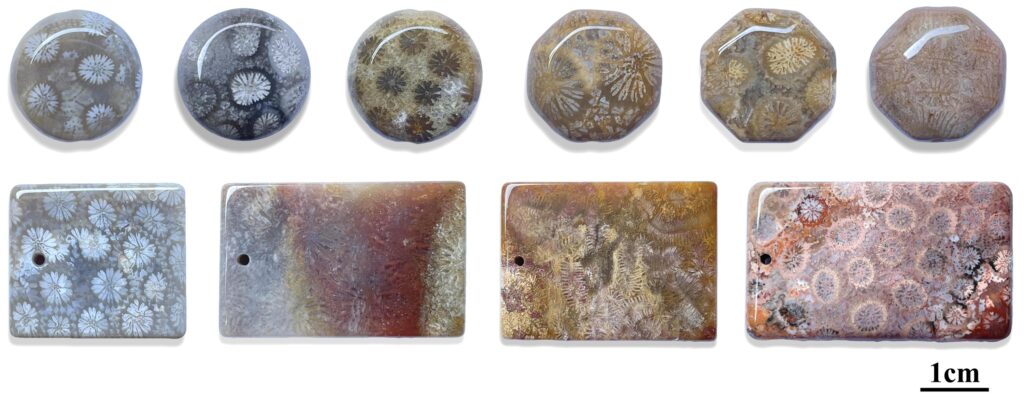Guy Lalous ACAM EG, summarises the state of making glass simulants of gems in the 16th Century, as well as exploring the historical information we have available on the enhancement of natural gem materials.
What about gem treatments?
Many gemstones can be treated to alter their colour and clarity. Today, gemmologists are confronted to a broad spectrum of treatments ranging from the simple to the highly sophisticated as well as the easily detected to the highly elusive. Treatments include: bleaching, coating, dying, fracture filling, heating, impregnation, high pressure, high temperature, irradiation, laser drilling and lattice diffusion.
What about the origins of gem treatments?
Heated carnelian was found in Tutankhamun’s tomb-dating to at least 1300 B.C.C. Plinius Secundus (First Century A.D) is the earliest written source on gem treatments. Pliny discusses many gemstone-enhancement techniques including foils, oiling and dying that are still in use today, almost 2,000 years later. The “Stockholm Papyrus” made about 400 A.D. in Greek-speaking Egypt contains 73 recipes which deal with the falsification of pearls and gemstones; representing the oldest extended recipe collection dealing with gems. In 1502 “The Mirror of Stones” was published, a fascinating book by Camillus Leonardus, a physician and astrologer of Pesaro, Italy. It discusses gem treatments and simulants and also how to identify those stones that are “not true” and the importance of experience and knowledge in this subject.
In the 17th Century, we have the Gemmarum et Lapidum Historia of 1609 by Boetius de Boot, a physician of Bruges. In the French translation of 1644, there is discussion in Chapters 20 to 22 of the decolourising by heat of sapphire, topaz, amethyst and the like, to produce diamond imitations; the dyeing of stones, mostly with metal compounds, an extended discussion of metal foils and an obscure description on how to harden gemstones. By 1820, agate dyeing in Idar-Oberstein had been perfected to the point that it was practiced on a large scale and the agate sold as treated stone. For the first time, a gemstone material was altered commercially and marketed as such and not as a natural material. By the middle of the 19th Century, gemmology had turned into a science (K. Nassau).
What about man-made glass?
Man-made glass dates back to approximately 5000-4000 BC, this took the form of glazes used for coating stone beads. It was not until 1500 BC that the first hollow glass container was made by covering a sand core with a layer of molten glass. Glass blowing became the most common way to make glass containers from the First Century BC. As from the First Century AD colourless glass was produced and coloured by the addition of colouring agents. Glass has been used as a substitute for emerald and other fine gemstones since at least the days of ancient Rome. Skills for glass making spread throughout Europe and the Middle East when the Roman Empire disintegrated. It was not until the full development of the Renaissance, in the mid-1500s, that a writer purposely gave the tedious details of the entire process of glass ‘gem’ making. This author was Giovan Battista Della Porta.




Figure 1: These ’emerald’ and ‘amethyst’ glass eardrops in the Renaissance style were presumably assembled in the second half of the 16th century. The mounting is partially silvered copper. The green glass ‘gems’ are 6 mm in diameter. Courtesy of a private collection near Rome, Italy; photo by Carlotta Cardana.
Giovan Battista Della Porta was the first to publish in print recipes for making glass simulants of gems, in addition to information on the enhancement of natural gem materials. His Magiae Naturalis (1558), originally written in Latin, enjoyed vernacular translations in several European languages. The second, vastly improved edition (Della Porta, 1589), again in Latin, did not enjoy the same popularity – possibly because the first one has saturated the market or, alternatively, because the Catholic Church has enforced rules that made alchemy a forbidden practice and even the title Magiae became suspect. In spite of such restrictions, both editions contributed to making glass ‘gems’ popular decorative objects and to increasing their trade. During Baroque times, interest in glass ‘gem’ making reached an acme, and Della Porta’s treatise was even translated into English in 1658.




Figure 2: This portrait of Giovan Battista Della Porta at the age of 50 is from the title plate of the 1589 edition of his Magiae Naturalis.
His modus operandi was well known. For every secret he learned, he first checked for other possible sources by reading books by old masters, after which he tested the results by performing experiments in his home laboratory. Glassmaking was one process that could be performed with a kiln, a rather simple apparatus. The preparation of certain special glasses (e.g. coloured ones suitable for simulating gems) involved knowledge that had been an artisan secret until it was released by Della Porta in his original 1558 edition of Magiae Naturalis.
In Book III of Magiae Naturalis, 1558, Della Porta wrote three chapters related to glass that followed the descriptions of other chemical operations, such as sublimation, distillation, purification and melting, plus miscellaneous recipes on how to repair broken corals, pearls and gemstones. He did not care to deal with how to make ordinary glass, but he proceeded directly to release the technicalities on how to prepare the special colourless glass that would be suitable for making coloured glass, so as to imitate gem materials. In chapter 16 he summarised the preliminaries, recommending the use of very finely ground silica mixed with fluxes.
In chapter 17 he made a digression aimed at explaining how natural gem materials acquire their colours and shifted to recipes on enhancing colour by using various natural pigments, by slowly diffusing them from the surface to the bulk of the gem under the slow action of fire. Then he returned to recipes intended to add weight to glass without modifying its hardness. In particular, he recommended adding lead to the already prepared colourless glass only while it melts, so as to increase its brilliance and weight. After another digression, he ended Chapter 18 with a series of explanations on how to obtain attractive ‘gem’ glass by carefully mixing colourless glass with pigments while it melts. The resulting gem simulants would resemble diamond, emerald, sapphire, pyrope, topaz, olivine, chalcedony, etc. The final recommendation was that the crucible containing the molten mix should be kept under close supervision, as excess heating would make the colour fade away.
In 1589, Della Porta, by now a mature scientist, reworked his Magiae Naturalis, expanding it from four books to 20. The in-folio sized text dealing with gems grew from five ordinary pages to a complete Book VI encompassing 10 dense pages and distributed over 13 chapters. Actually, only Chapters 1 to 5 concern glass gem simulants and Chapters 7 to 13 mostly concern the enhancement of gem materials. Everything is described in much greater detail than in the previous edition. After an introduction, Della Portas begins Chapter 1 with a careful description for the preparation of reagents for glass gem making, beginning with two fluxes. Chapter 2 recalls that silica is the main constituent of any glass gem. The raw silica can be either crystal or flint, or even round pebbles; the best of are said to be those gathered from the river Thames.
Chapter 3 describes in detail the furnace and the instruments to be used and Chapter 4 teaches how to prepare pigments. Chapter 5 is the core of the entire process. Indeed, it is titles “How gems are coloured”. The pigments are blended with the previously prepared colourless glass while it is molten, so that they mix homogeneously. The recipe for glass used to simulate emerald is given last because the preparation requires a long exposure to fire. The following chapters describe various enhancements of natural gem materials and then move onto enamels, coloured metal sheets for reflection, etc. The author ends book VI, Chapter 13, with the short but factual statement: “This is all what we experimented on gems so far”.




Figure 3: The title page of Magiae Naturalis Libri XX, 1589 edition, shows the titles of all 20 books composing this volume.
The second half of the 17th Century in England was characterised by an economic revival with increasing interest for science in general, including those books penned by ‘writers of secrets’. The practice of publishing ‘secrets’, although unwelcome to many, contributed to the development of both science and the economy. In particular, it is significant that Della Porta’s Magiae Naturalis, intended for completely different purposes and contributing only poorly to the ‘scientific revolution’ because of its still rather alchemical bent, eventually helped speed up the English industrial revolution.
This is a summary of an article that originally appeared in The Journal of Gemmology entitled ‘Counterfeiting Gems in the 16th Century: Giovan Battista Della Porta on Glass ‘Gem’ Making” by Annibale Mottana 2017/Volume 35/ No. 7 pp. 652-666
Interested in finding out more about gemmology? Sign-up to one of Gem-A’s courses or workshops.
If you would like to subscribe to Gems&Jewellery and The Journal of Gemmology please visit Membership.
Cover image: Title page of the first english translation of Natural Magick in 1658, the title page of Magiae Naturalis Libri XX, 1589 edition and the frontispiece of the english translation of Natural Magick, 1658.
{module Blog Articles Widget}



